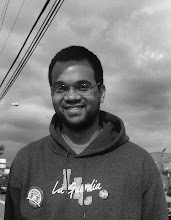I was accompanied by two of my classmates, Zina and Ana, along with Ana’s friend, Rodrigo. Together, we toured the museum as a group.
Our primary objective: to visit the Gottesman Hall of Planet Earth and document our findings.
Now...I'd be more than happy to expound on that later, but for the moment I'd like to focus on the non-assignment related portion of our tour.
The first attraction to catch my eye that morning didn’t lie beyond the turnstile from which you enter the museum’s halls. Instead, it hung from the walls of its Theodore Roosevelt Rotunda. What I saw was a quote, and not surprisingly, it came straight from the lips of the "Great Conservationist", himself. It said, "There are no words that can tell the hidden spirit of the wilderness, that can reveal its mystery, its melancholy and its charm."
What I took away from that remark was rather simple;
After passing through the turnstile, we proceeded forward into the Akeley Hall of African Mammals. As we entered, memories of past visits to the museum as a child, with my father, began to flood my brain. I remembered that when I was little, much like the children who barreled their way past us for most of our tour, I used to press my entire body against the glass, so I'd be able to get the best view that I could, of every diorama.
Back then, going to the museum was almost like going to the zoo, in the sense that the animal dioramas looked so authentic they seemed real to me. At the zoo, however, the experience of seeing living animals in unnatural environments felt more contrived.
One of the observations that we were asked to make during the course of our visit, was to notice how the museum served as a type of media.
Every exhibit had its own ambiance, and possessed distinct visual or audio features.
The animal dioramas are, arguably, the most lifelike of all the exhibits in the museum. The fine attention to detail that was paid to each of the animals, and their respective habitats, is displayed prominently. The craftsmanship of every tree, leaf, stone, and piece of brush was superior in its quality. Each setting's landscape, which appeared to be hand-painted, had an elliptical shape; creating a panoramic like view. The structure of every, individual, terrain's surface was true to its actual geological features. Even the lighting used for the dioramas lent itself to their authenticity. For example, a particular setting in
Including Akeley, we viewed several other exhibits: Asian Mammals, Stout Hall of Asian Peoples, Mexico and Central America, and South American Peoples.
One of the more memorable features of the South American Peoples exhibit was a short documentary film about the threat of industrialization to the cultures of certain native Indian tribes; yet another example of the museum acting as a type of media.
By utilizing a wide array of media, the museum strives to recreate the natural environments of indigenous animals and ancient peoples, alike, in what all actuality is an artificial setting. To its credit, I think it's been a colossal success. If it wasn't, then why would people bother going in the first place?
The first few hours of our tour of the American Museum of Natural History were spent leisurely viewing other exhibits, before we began the daunting task of recording data (providing hard evidence of global climate change) at the Gottesman Hall of Planet Earth.
To be continued...
